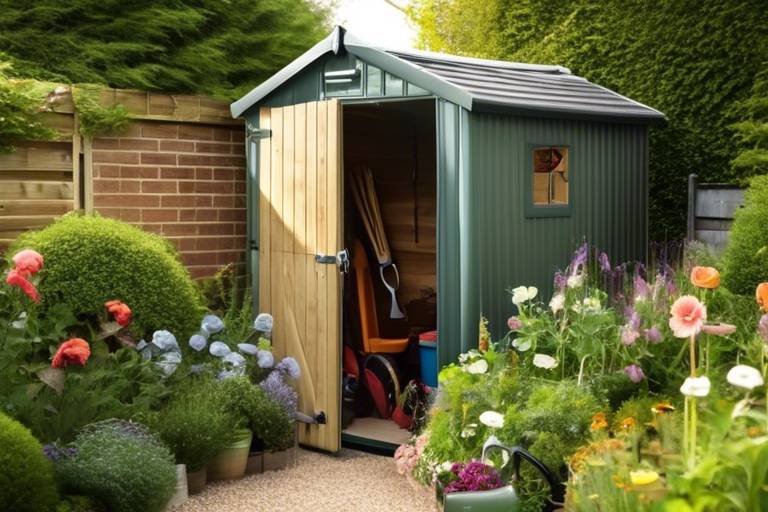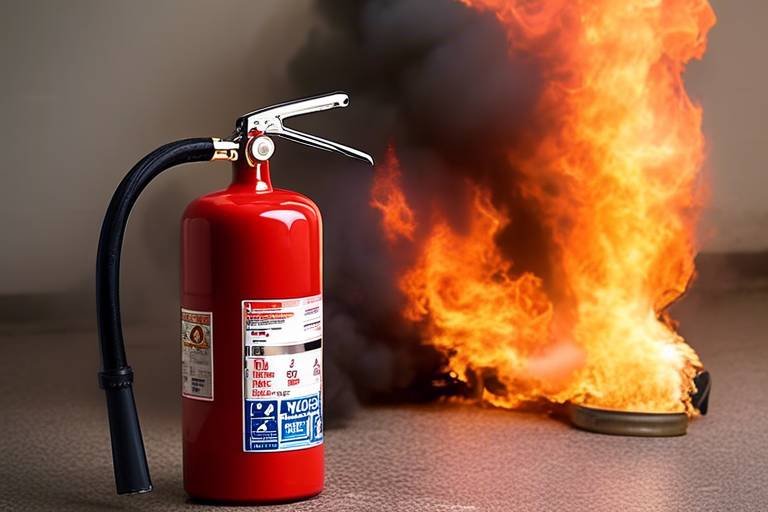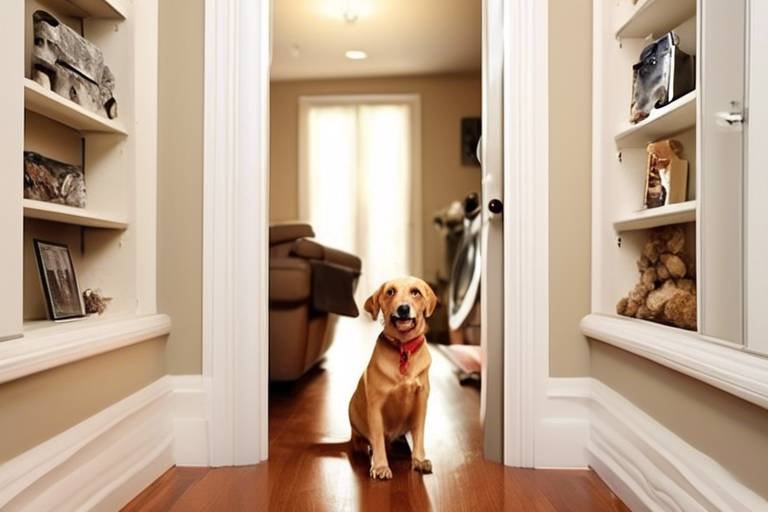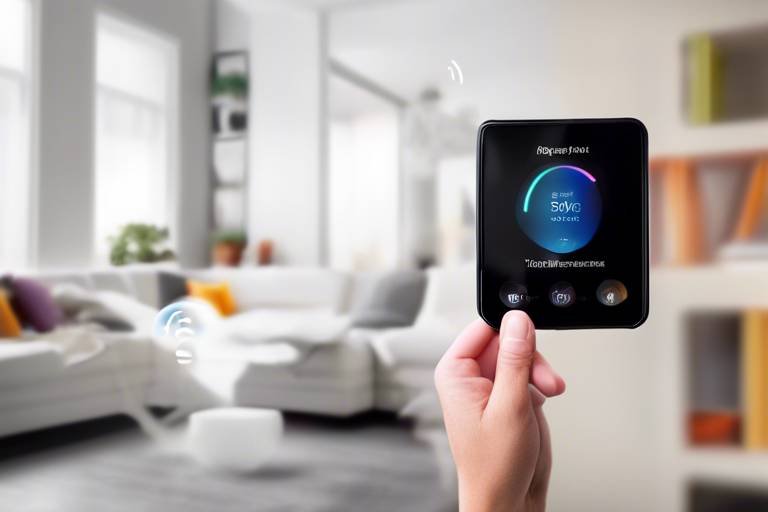Security Tips for Garden Sheds
Owning a garden shed can be a delightful experience, offering a space for tools, gardening supplies, and even a place to unwind in your backyard. However, the thought of theft or vandalism can cast a shadow over your enjoyment. That's why it's crucial to implement security measures to protect your belongings. In this article, we'll explore essential tips and strategies to ensure your garden shed remains a safe haven. From assessing vulnerabilities to choosing the right locks and enhancing physical security, we’ve got you covered. Let’s dive into the world of garden shed security!
The first step in fortifying your garden shed is to identify its vulnerabilities. Every shed has its weak points, whether it's the lock, windows, or even the construction materials. Start by taking a good look around your shed and asking yourself a few questions:
- Are the doors and windows sturdy enough to withstand an attempted break-in?
- What type of lock is currently installed, and how effective is it?
- Is the shed located in a well-lit area, or does it sit in the shadows?
By evaluating these aspects, you can pinpoint areas that need improvement. Remember, a well-secured shed not only protects your belongings but also provides peace of mind while you enjoy your outdoor space.
Locks are the first line of defense for your garden shed, and choosing the right one can significantly impact your security. With various options available, it's essential to understand their features and benefits. Consider the following types of locks:
Understanding the different types of locks can help you make an informed decision. Here's a quick overview:
| Type of Lock | Pros | Cons |
|---|---|---|
| Padlocks | Versatile, easy to use | Can be cut with bolt cutters |
| Deadbolts | High security, difficult to pick | Requires installation |
| Smart Locks | Remote access, monitoring | Requires power or batteries |
Padlocks are incredibly versatile and come in various styles. When selecting a padlock, look for one made from hardened steel with a shrouded shackle to prevent cutting. A high-quality padlock can offer a solid layer of security for your shed.
If you're looking for advanced security features, smart locks might be the way to go. They allow for remote access and can send alerts to your phone if someone tries to tamper with your shed. However, keep in mind they need a power source, so ensure you have a backup plan in case of outages.
Once you've chosen the right lock, proper installation is key. Follow manufacturer instructions carefully, and consider hiring a professional if you're unsure. A poorly installed lock is as good as no lock at all!
Locks alone won't deter determined intruders. You need to bolster your shed's physical security. One effective method is reinforcing doors and windows. For instance, adding a metal plate to your door can make it much harder to kick in. Similarly, securing windows with locks or bars can prevent unauthorized access.
Reinforcing your shed's doors can dramatically improve security. Consider using materials like steel or reinforced wood to strengthen the door. Adding a deadbolt lock can also offer extra protection against forced entry.
Windows are often a weak point in shed security. To enhance window security, you can:
- Install window locks
- Add security bars
- Apply security film to make glass shatter-resistant
These measures can help keep your shed secure and give you peace of mind.
Incorporating alarm systems and surveillance cameras adds an extra layer of security to your garden shed. These technologies can alert you to unauthorized access and deter potential thieves.
Alarm systems can immediately notify you if someone tries to break in. Choose a system that fits your needs, whether it's a simple motion detector or a more complex setup with multiple sensors.
Surveillance cameras provide visual monitoring and can deter theft. When selecting a camera, consider factors such as resolution, night vision capabilities, and storage options. Place cameras in strategic locations to cover all angles of your shed.
Routine maintenance and inspections are vital for ongoing security. Regularly check your locks, hinges, and overall shed condition to ensure everything is functioning properly. A little maintenance goes a long way in keeping your shed secure.
Keeping locks in good condition is essential for security. Lubricate locks periodically to prevent rust and ensure they function smoothly. A well-maintained lock is your best defense against intruders.
Regular maintenance of your shed can prevent vulnerabilities. Tasks such as checking for rot, ensuring doors and windows close properly, and keeping the area around the shed clear of debris can help maintain its integrity over time.
Q: What is the best type of lock for a garden shed?
A: A deadbolt lock is often considered the best option for securing a garden shed, as it offers high security. However, a combination of a deadbolt and a padlock can provide even more protection.
Q: How can I improve the security of my shed without spending a lot of money?
A: Simple measures like reinforcing doors, securing windows with locks, and regularly maintaining your shed can significantly enhance security without breaking the bank.
Q: Are smart locks worth the investment?
A: Smart locks offer convenience and advanced security features, making them a worthwhile investment for many homeowners. However, ensure you have a backup plan for power outages.
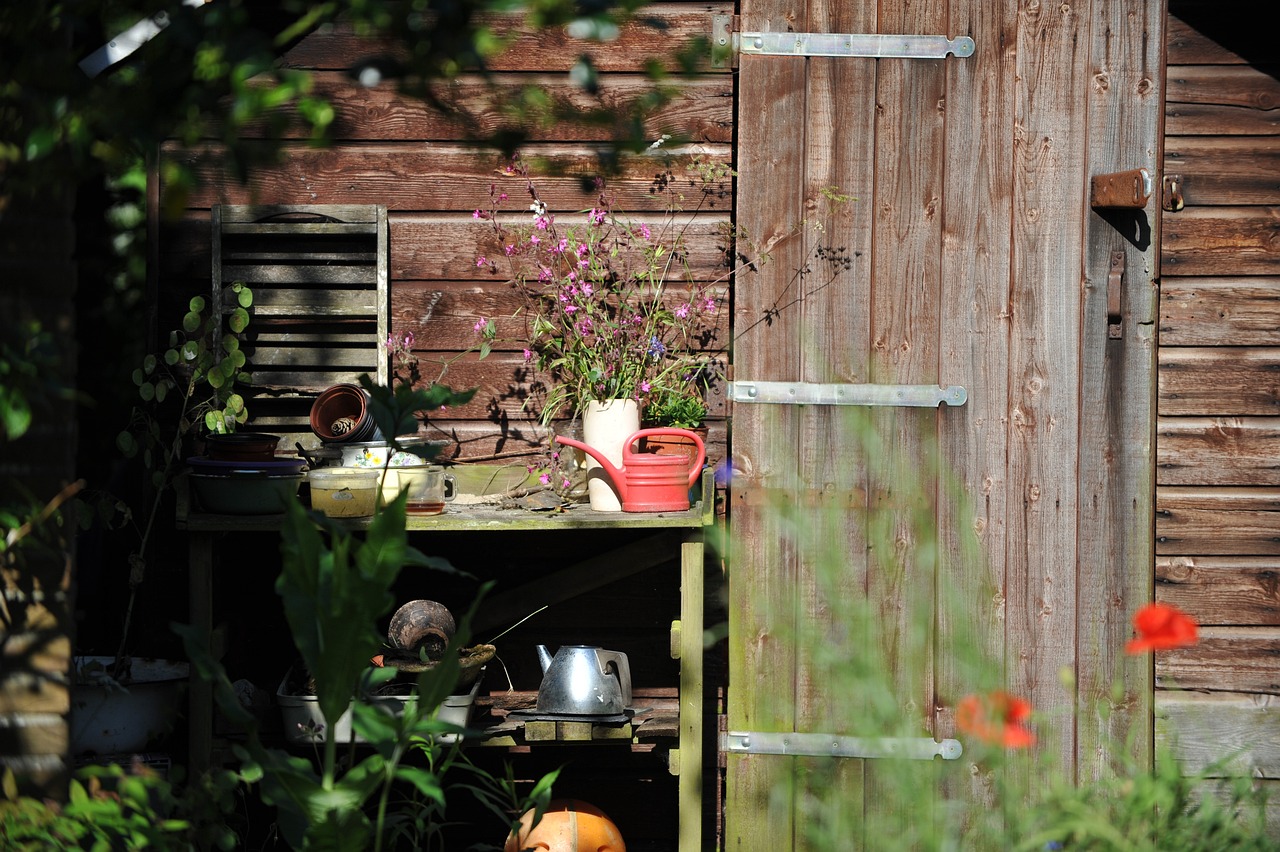
Assessing Your Shed's Vulnerabilities
When it comes to securing your garden shed, the first step is to identify its vulnerabilities. Just like a knight wouldn’t charge into battle without assessing the enemy's strengths and weaknesses, you shouldn’t lock up your shed without understanding where it might be at risk. Take a moment to walk around your shed and look for potential weak spots. Are the doors solid? Are the windows easily accessible? Is the shed located in a well-lit area, or is it hidden in the shadows? These are crucial questions that can guide you in fortifying your fortress.
Common vulnerabilities often include:
- Weak locks: Are your locks sturdy enough to withstand tampering?
- Inadequate lighting: Is your shed well-lit at night?
- Flimsy doors: Can someone easily kick in your door?
- Unsecured windows: Are your windows easily breakable or without locks?
To help you visualize your shed's security status, consider creating a simple security checklist. This could be as easy as jotting down notes about each vulnerability you find. For instance, if you discover that the door hinges are rusty and squeaky, that’s a red flag! Remember, every little detail counts when it comes to keeping your belongings safe.
Additionally, think about the surroundings of your shed. Is it close to your home where you can keep an eye on it? Or is it tucked away behind bushes, making it an easy target for thieves? Sometimes, just repositioning your shed or improving the visibility around it can make a world of difference. Consider implementing some landscaping changes that deter intruders, such as thorny bushes or gravel pathways that create noise when stepped on.
Finally, don’t forget to involve your neighbors. A vigilant community can be your best defense. Talk to your neighbors about keeping an eye out for suspicious activity around your properties. Forming a neighborhood watch can not only enhance your shed's security but also build camaraderie within your community. After all, it’s always better to be proactive rather than reactive when it comes to protecting your cherished belongings.
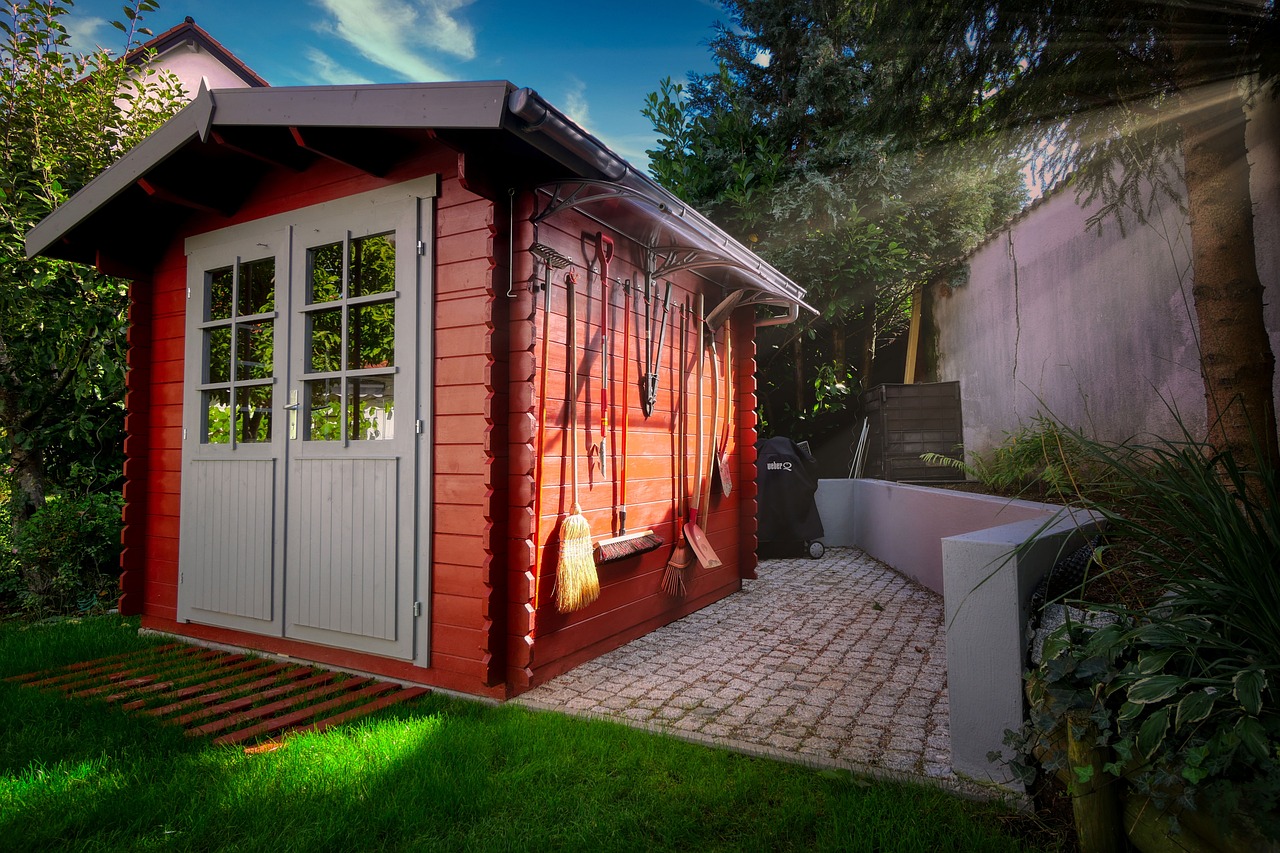
Choosing the Right Lock
When it comes to securing your garden shed, one of the most critical decisions you'll make is choosing the right lock. Think of it as the first line of defense against potential thieves and vandals. Just like a sturdy door is essential for your home, a reliable lock is crucial for your shed. With so many options available, it can be overwhelming to decide which lock is best suited for your needs. But fear not! We're here to break it down for you.
First, consider the type of lock that fits your lifestyle and security requirements. There are several categories of locks, each with its unique features and benefits. For instance, you might opt for a traditional padlock, which is versatile and easy to use. But if you're looking for something more advanced, smart locks could be the way to go, offering remote access and monitoring capabilities. It's essential to weigh the pros and cons of each type to determine what aligns best with your security needs.
Here’s a quick comparison of some popular lock types:
| Lock Type | Pros | Cons |
|---|---|---|
| Padlocks | Versatile, portable, easy to use | Can be cut with bolt cutters if not high-security |
| Deadbolts | High security, difficult to pick | Requires installation, not portable |
| Smart Locks | Remote access, alerts, monitoring | Requires power, can be hacked |
Next, think about the quality of the lock. A high-quality lock is often made from durable materials that can withstand tampering and harsh weather conditions. Look for locks that have a good reputation and are made by reputable manufacturers. It's like choosing a good pair of shoes; you want something that not only looks good but also stands the test of time.
Another factor to consider is the installation process. Some locks are straightforward to install, while others may require professional assistance. If you're a DIY enthusiast, you might enjoy the challenge of installing a deadbolt or smart lock yourself. However, if you're not comfortable with tools, hiring a professional might be the best option. After all, a lock is only as good as its installation!
Lastly, don't forget to think about your specific needs. Do you have valuable tools or equipment in your shed that require extra protection? If so, investing in a more robust locking mechanism might be worth it. On the other hand, if your shed primarily stores gardening supplies, a standard padlock may suffice. It's all about finding that sweet spot between security and convenience.
In summary, choosing the right lock for your garden shed is a decision that shouldn't be taken lightly. By assessing your needs, understanding the various lock types, and considering quality and installation, you can make an informed choice that provides peace of mind. Remember, a secure shed not only protects your belongings but also allows you to enjoy your outdoor space without worry.
- What is the best type of lock for a garden shed? It depends on your specific security needs. Padlocks are versatile, while deadbolts offer higher security. Smart locks provide advanced features.
- How do I install a deadbolt on my shed? Installation typically involves drilling holes for the lock and securing it with screws. If you're unsure, consider hiring a professional.
- Are smart locks worth the investment? Yes, if you value convenience and monitoring capabilities. However, ensure you have a reliable power source and understand the potential risks.

Types of Locks
When it comes to securing your garden shed, the type of lock you choose can make a world of difference. With various options available, it’s essential to understand their features and functionalities to make an informed decision. Let's dive into the most common types of locks used for garden sheds, each with its own advantages and disadvantages. This way, you can find the perfect fit for your security needs.
First up, we have padlocks. These are perhaps the most versatile and widely used locks. They come in various sizes and designs, making them suitable for different applications. A high-quality padlock can provide solid security if you choose one with a hardened shackle and a reliable locking mechanism. However, it's important to note that padlocks can be vulnerable to certain attacks, such as shimming or cutting. To mitigate these risks, consider investing in a padlock that features anti-shim technology or is made from boron steel.
Next, we have deadbolts. These locks are known for their strength and durability. Unlike standard spring locks, deadbolts require a key or thumb turn to operate, offering an extra layer of security. They are typically installed on the door frame, making it difficult for intruders to pry them open. However, the installation process can be a bit more complex than that of a padlock, so you may want to hire a professional if you're not handy with tools.
Lastly, let's talk about smart locks. These high-tech options are becoming increasingly popular due to their advanced features. Smart locks allow you to control access to your shed via a smartphone app or a keypad. Some models even offer remote monitoring, which means you can check the status of your shed's lock from anywhere. While smart locks can provide convenience and enhanced security, they do require a power source, and their electronic components may be susceptible to hacking. Therefore, it's crucial to choose a reputable brand and keep the software updated.
To summarize, here's a quick comparison of the three types of locks:
| Lock Type | Pros | Cons |
|---|---|---|
| Padlocks | Versatile, easy to use | Vulnerable to cutting and shimming |
| Deadbolts | Strong, durable, harder to pry open | Complex installation |
| Smart Locks | Remote access, convenient | Requires power, potential hacking risks |
In conclusion, selecting the right lock for your garden shed is crucial for enhancing its security. Whether you opt for a padlock, deadbolt, or smart lock, each option has its unique strengths and weaknesses. Take the time to evaluate your specific needs and choose a lock that aligns with your security requirements. Remember, a well-secured shed not only protects your belongings but also gives you peace of mind while you enjoy your outdoor space.
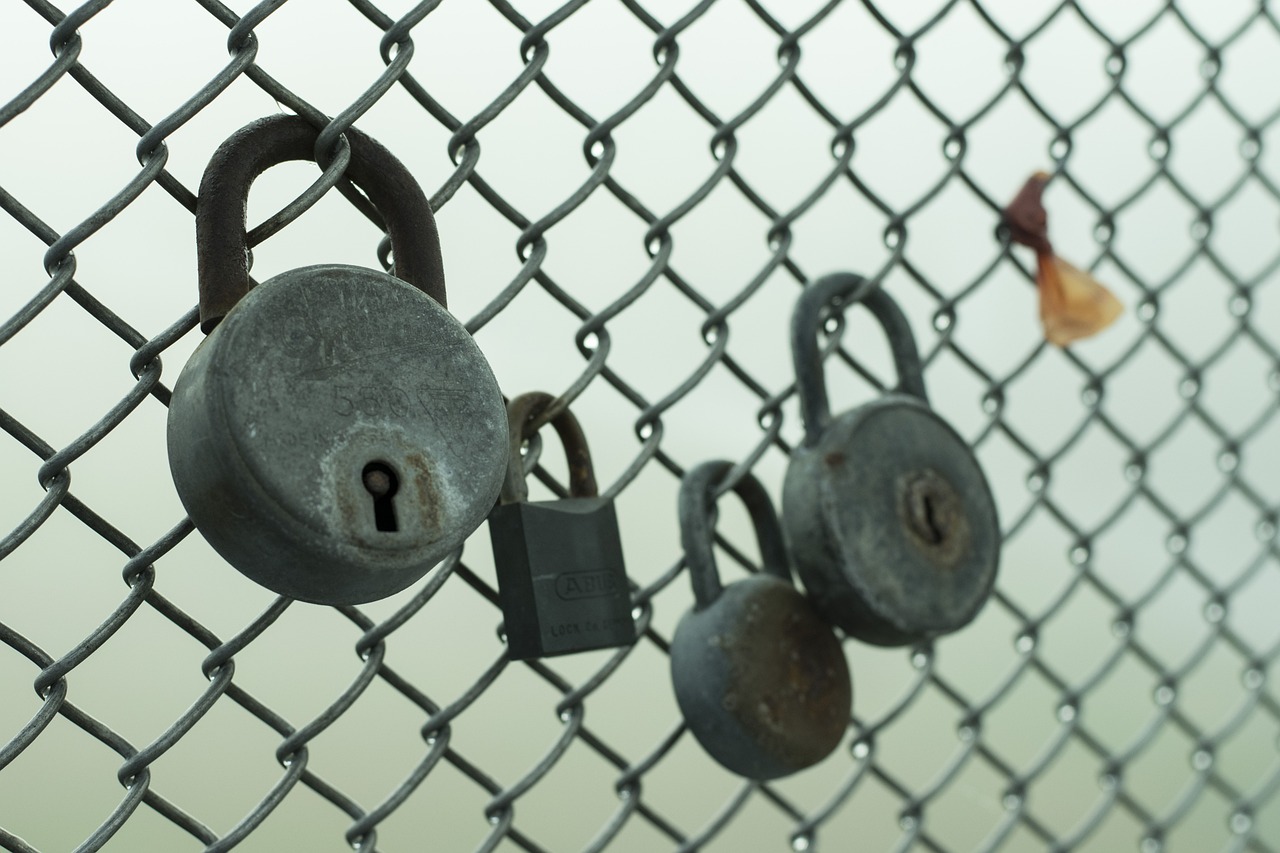
Padlocks
When it comes to securing your garden shed, are often the go-to choice for many homeowners. Their versatility and ease of use make them an attractive option, but not all padlocks are created equal. Understanding the features and types of padlocks available can help you choose the right one to protect your valuable tools and equipment. Imagine your shed as a treasure chest; the padlock is the key to keeping your treasures safe from prying eyes and sticky fingers.
There are several styles of padlocks, each offering different levels of security. Here are a few common types to consider:
- Standard Padlocks: These are the most basic form of padlocks and are easy to find. However, their simplicity can also be a weakness, as they may not withstand determined attempts at forced entry.
- Combination Padlocks: These locks require a specific sequence of numbers to open, eliminating the need for a physical key. While they offer convenience, they can be vulnerable to someone who knows how to crack the combination.
- High-Security Padlocks: Designed with advanced materials and mechanisms, these locks are more resistant to tampering and cutting. Investing in a high-security padlock can provide peace of mind, knowing that your shed is well protected.
When selecting a padlock, consider the following factors to ensure maximum security:
- Material: Look for padlocks made of hardened steel or brass, as these materials are more resistant to cutting and corrosion.
- Shackle Size: A thicker shackle is generally more secure. Aim for a shackle that is at least 10mm thick to deter bolt cutters.
- Weather Resistance: If your shed is exposed to the elements, choose a padlock that is specifically designed to withstand rust and corrosion.
To further enhance the security of your padlock, consider using a hasp and staple. A hasp is a hinged clasp that secures the padlock to the door or gate, making it more difficult for thieves to pry open. Additionally, always ensure that the padlock is properly engaged and that there’s no slack when locking it. Remember, a padlock is only as secure as its installation!
In conclusion, padlocks are a vital component of your garden shed's security. By choosing the right type and ensuring proper installation, you can significantly reduce the risk of theft and vandalism. Your shed should be a sanctuary for your gardening tools, not a target for intruders. So, invest in a quality padlock today and keep your outdoor space safe and sound!
Q: What is the best type of padlock for my garden shed?
A: High-security padlocks are recommended for garden sheds as they provide better resistance against tampering and cutting. Look for locks made of hardened steel with a thick shackle.
Q: Can I use a combination padlock for my shed?
A: Yes, combination padlocks can be convenient, but ensure you choose a high-quality model. Remember to keep your combination secure and change it periodically for added security.
Q: How do I maintain my padlock?
A: Regularly check your padlock for rust or wear. Apply a lubricant specifically designed for locks to keep the mechanism functioning smoothly, especially if it’s exposed to the elements.
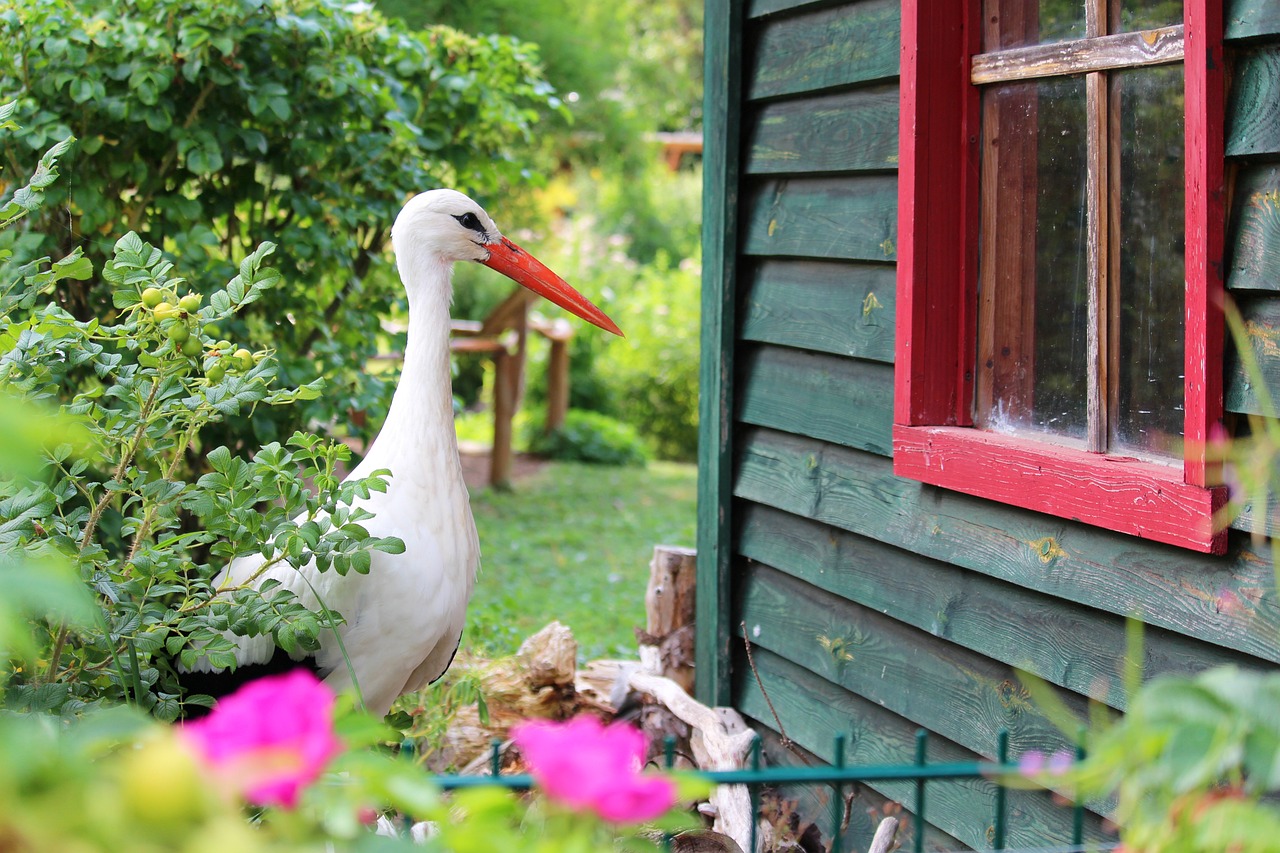
Smart Locks
In today’s world, where technology is advancing at lightning speed, have emerged as a game-changer for securing your garden shed. These locks are not only about convenience but also about providing an enhanced level of security that traditional locks simply cannot match. Imagine being able to lock and unlock your shed from anywhere, using just your smartphone! This is the kind of freedom and peace of mind that smart locks offer.
One of the standout features of smart locks is their ability to provide remote access. This means you can grant access to friends, family, or neighbors without having to be physically present. If you’re away on vacation and someone needs to retrieve gardening tools or supplies, you can simply send them a digital key via an app. This eliminates the need for spare keys hidden under the doormat or in the flowerpot, which are often the first places intruders look.
Smart locks come with various features that cater to different security needs. Here are some of the most popular:
- Keyless Entry: Say goodbye to fumbling for keys! With smart locks, you can unlock your shed using a keypad, fingerprint scanner, or even a mobile app.
- Activity Logs: Many smart locks keep a record of who accessed your shed and when. This feature can help you monitor your shed’s usage and detect any suspicious activity.
- Integration with Smart Home Systems: If you already have a smart home setup, you’ll be pleased to know that many smart locks can integrate with your existing devices, allowing for seamless control.
However, it's essential to remember that while smart locks offer many advantages, they are not infallible. It’s crucial to choose a reputable brand and ensure that the lock is installed correctly. Some smart locks can be vulnerable to hacking if not adequately secured. Therefore, always opt for locks that offer robust encryption and regular updates to their firmware.
In conclusion, investing in a smart lock for your garden shed can significantly enhance your security while providing you with the convenience of modern technology. Just like a well-tended garden, a secure shed requires the right tools to flourish. So why not embrace the future and give your shed the protection it deserves?
Q1: Are smart locks safe for outdoor use?
A1: Yes, many smart locks are designed to withstand outdoor conditions. Look for locks with weather-resistant features to ensure durability.
Q2: What happens if the battery of a smart lock dies?
A2: Most smart locks have a backup key option or a way to connect a power source temporarily to unlock the door.
Q3: Can I use a smart lock without Wi-Fi?
A3: Yes, many smart locks operate via Bluetooth, allowing you to unlock them without a Wi-Fi connection. However, remote access features may require Wi-Fi.
Q4: How do I maintain a smart lock?
A4: Regularly check the battery, update the firmware, and ensure the lock is free of dirt and debris to keep it functioning optimally.
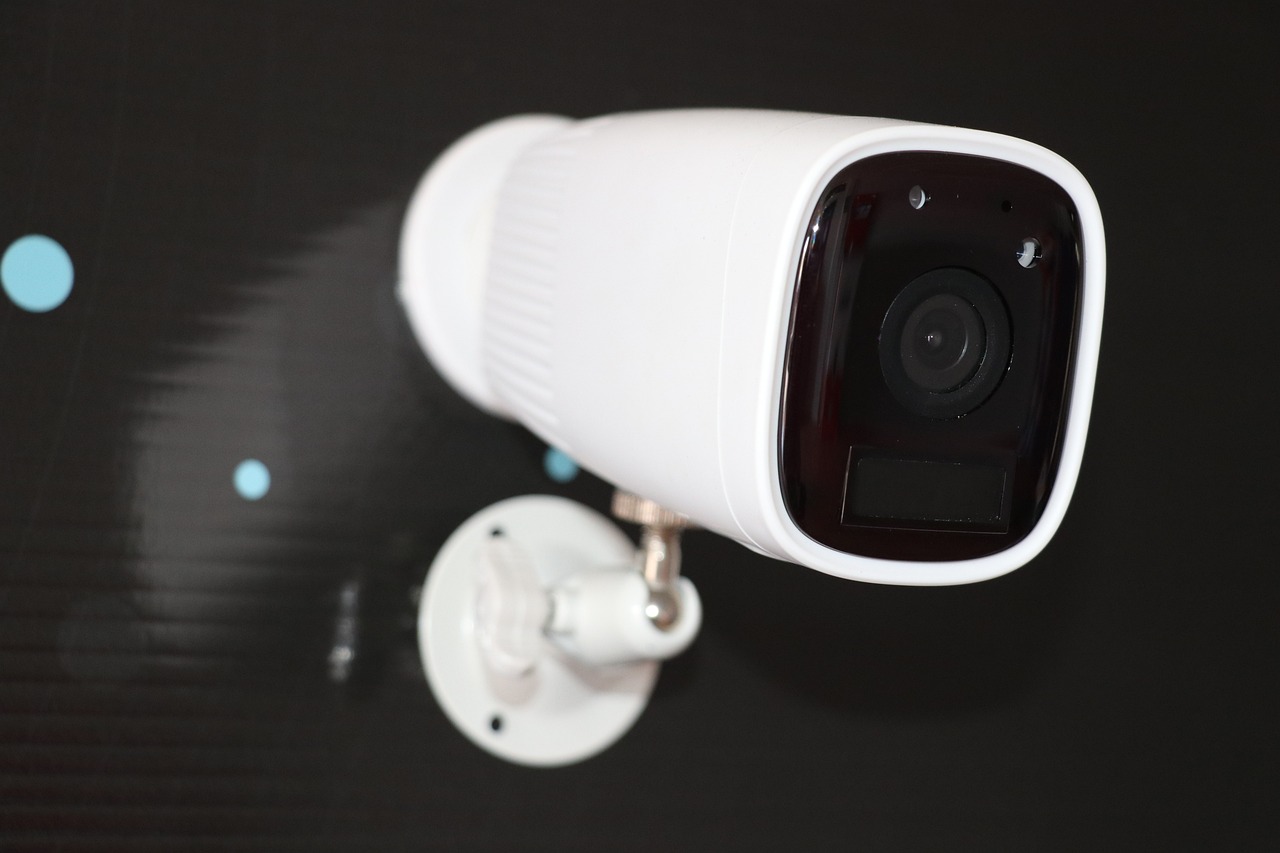
Installation Tips
When it comes to securing your garden shed, proper installation of locks and security devices is absolutely crucial. Think of it like building a fortress; the stronger your foundation, the better protected your treasures will be. First and foremost, ensure that you have the right tools at your disposal. A good drill, a set of screws, and a level will make your installation process much smoother. Trust me, you don’t want to be halfway through and realize you’re missing a crucial piece of equipment!
Before you start, take a moment to examine your shed's door and frame. Are there any gaps that could be exploited? If so, consider reinforcing the door frame with a sturdy metal plate. This can make it much more difficult for intruders to kick in the door. Additionally, when installing locks, it’s essential to position them correctly. A lock that’s too high or too low can be awkward to use and may not provide the security you need. Ideally, the lock should be installed at a height that is both accessible and secure.
Here are some key tips to keep in mind during the installation process:
- Choose the Right Location: For locks, make sure they are placed where they are least likely to be tampered with. Avoid spots that are easily reachable from windows or other vulnerable areas.
- Secure All Hinges: Ensure that the hinges of your shed door are secured with tamper-proof screws. This simple step can prevent the door from being pried open.
- Test Your Locks: After installation, don’t forget to test your locks multiple times. Make sure they engage smoothly and securely. A lock that sticks or is difficult to turn can be a significant vulnerability.
Furthermore, consider adding additional security devices such as motion sensors or deadbolts. Deadbolts, in particular, provide an extra layer of security that can deter even the most determined intruders. When installing deadbolts, ensure that they extend deep into the frame of the shed for maximum effectiveness.
Lastly, remember that the installation of your security measures is just the beginning. Regularly check the condition of your locks and security devices to ensure they are functioning correctly. Just like a car needs regular maintenance, so does your shed! A little attention can go a long way in keeping your belongings safe.
Q: How often should I check my shed's locks?
A: It's advisable to check your locks at least once a month, especially after severe weather or if you notice any signs of wear.
Q: Can I install a smart lock myself?
A: Yes! Most smart locks come with detailed instructions that make DIY installation straightforward. Just ensure you have a stable Wi-Fi connection for optimal performance.
Q: What should I do if my lock is sticking?
A: If your lock is sticking, try lubricating it with a graphite lubricant. If the problem persists, consider replacing the lock for enhanced security.
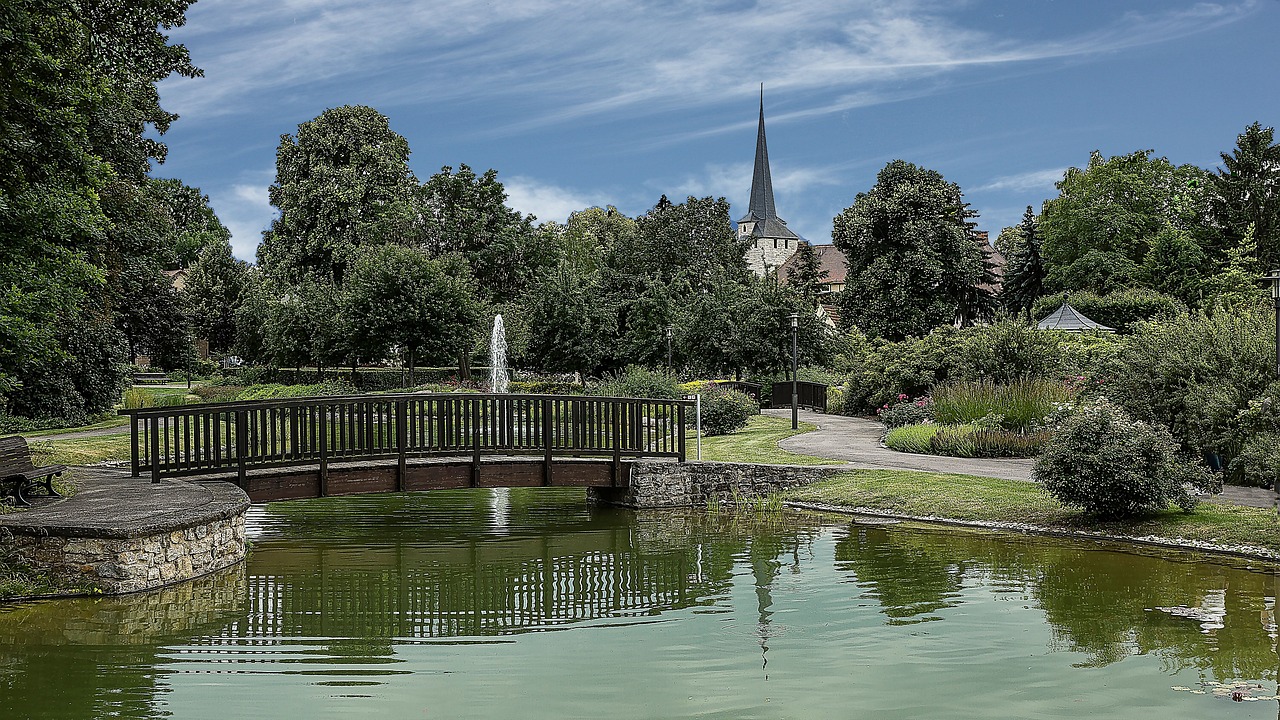
Enhancing Physical Security
When it comes to safeguarding your garden shed, relying solely on locks isn't enough. involves a multi-faceted approach that makes it more challenging for intruders to gain access. Think of it like fortifying a castle; the more barriers you have, the less appealing it becomes for would-be thieves. Start by looking at your shed's doors and windows, as these are often the most vulnerable points. By reinforcing these entry points, you can significantly reduce the risk of theft or vandalism.
One effective method for enhancing door security is to install a solid core door, which is much harder to break through than a standard hollow door. Additionally, you can add a security bar or a deadbolt lock for extra protection. These measures can make your shed feel like a fortress, giving you peace of mind while you enjoy your outdoor space. Remember, the goal is to deter intruders before they even think about attempting to enter your shed.
Windows, on the other hand, are often overlooked. Many people assume that a simple latch will suffice, but that’s not the case. Consider installing window locks or even security bars to prevent unauthorized access. Another option is to apply security film to your windows. This transparent layer can hold shattered glass in place, making it much harder for someone to break in. By reinforcing your windows, you’re essentially adding another layer of defense that can deter even the most determined intruder.
In addition to physical reinforcements, you might want to think about the landscaping around your shed. Keeping shrubs and trees trimmed can eliminate hiding spots for potential thieves. A well-lit area is also a deterrent; consider installing motion-sensor lights that illuminate the vicinity of your shed. The last thing a thief wants is to be caught in the spotlight!
To summarize, enhancing physical security for your garden shed involves:
- Upgrading to solid core doors
- Installing deadbolt locks and security bars
- Reinforcing windows with locks or security film
- Maintaining a clear line of sight by trimming landscaping
- Adding motion-sensor lighting for increased visibility
By implementing these strategies, you can create a more secure environment for your garden shed. Remember, a little extra effort in enhancing physical security can go a long way in protecting your valuable belongings and ensuring that you can enjoy your outdoor space without worry.
Q: What is the best way to reinforce shed doors?
A: Upgrading to a solid core door and adding a deadbolt lock or security bar are effective methods to reinforce shed doors.
Q: How can I secure my shed windows?
A: Installing window locks, security bars, or applying security film can significantly enhance the security of your shed windows.
Q: Are motion-sensor lights effective for shed security?
A: Yes, motion-sensor lights can deter potential intruders by illuminating the area around your shed, making it less appealing for theft.
Q: Should I consider an alarm system for my shed?
A: Absolutely! An alarm system can provide an extra layer of security by alerting you to any unauthorized access immediately.
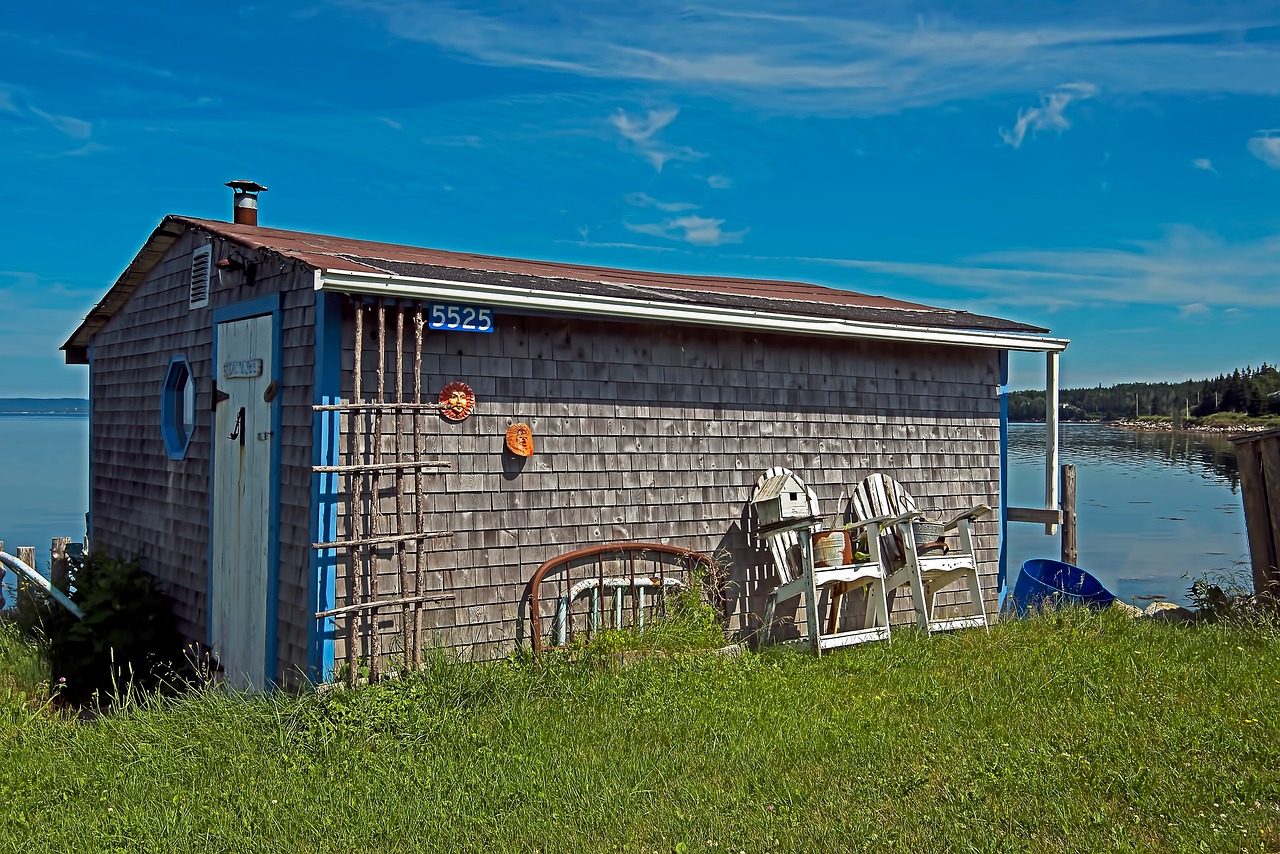
Reinforcing Doors
When it comes to securing your garden shed, the doors are often the first line of defense against unwanted intruders. Just like how a sturdy fortress has impenetrable gates, your shed's doors should be equally fortified. Reinforcing your doors is not just a good idea; it’s a necessity if you want to safeguard your tools and belongings. So, how can you go about making your shed doors more secure? Let's dive into some effective methods!
One of the most straightforward ways to reinforce your shed doors is by adding a solid core door instead of a flimsy hollow one. Solid core doors are much more resistant to forced entry. If replacing the door isn’t an option, consider using a door reinforcement plate. These metal plates are installed over the existing door and help prevent it from being kicked in or pried open. They’re affordable and can significantly enhance your door's strength.
Another effective method is to install heavy-duty hinges. Standard hinges can be easily unscrewed or pried off, but heavy-duty hinges are designed to withstand more force and are often tamper-proof. Make sure to use at least three hinges on each door, spaced evenly, to distribute weight and stress. Additionally, consider using security screws instead of regular screws for added protection. Security screws have unique heads that require special tools to remove, making it more difficult for a thief to gain access.
Furthermore, you can improve your door's locking mechanism. A simple padlock may not cut it when it comes to serious security. Instead, opt for a deadbolt lock or a hasp lock. Deadbolts provide an extra layer of security that standard locks cannot match. If you choose a hasp lock, make sure it’s made of hardened steel and is installed correctly to prevent it from being pried open.
Lastly, don’t forget about the importance of lighting. A well-lit area deters criminals, so consider installing motion-sensor lights near your shed. This not only makes it more difficult for intruders to approach unnoticed but also alerts you to any suspicious activity.
In summary, reinforcing your shed doors is a multi-faceted approach that combines solid materials, effective locking mechanisms, and strategic lighting. By taking these steps, you’ll not only enhance your shed's security but also gain peace of mind knowing your belongings are well protected.
- What type of door is best for my garden shed?
A solid core door is highly recommended for its durability and resistance to forced entry. - How can I reinforce my shed doors on a budget?
Consider adding a door reinforcement plate and heavy-duty hinges to strengthen your existing door without a full replacement. - Are deadbolts worth the investment?
Absolutely! Deadbolts provide a level of security that standard locks simply can't match, making them a worthwhile investment for your shed.
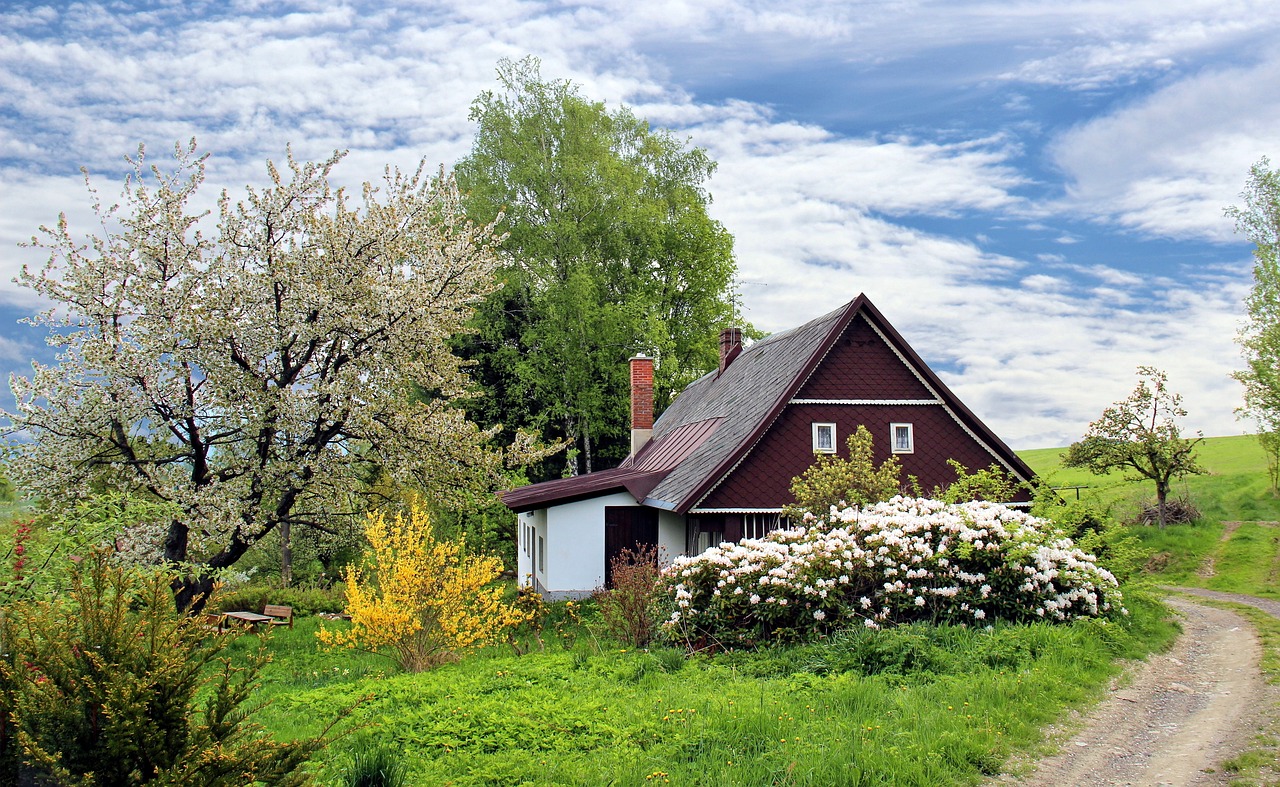
Window Security
When it comes to securing your garden shed, windows can often be a weak point that intruders exploit. If you think about it, a window is like an open invitation for someone looking to get in. Therefore, it's crucial to put in place effective measures to fortify your windows against unauthorized access. Start by considering the materials and construction of your shed's windows. Are they made of glass that can be easily broken? If so, you might want to explore options for upgrading to more secure alternatives like plexiglass or polycarbonate sheeting, which are much tougher and harder to break.
In addition to using stronger materials, you should also think about installing window locks. These locks come in various styles, from simple sliding locks to more robust keyed locks. For instance, a sliding window lock can prevent the window from being opened even if someone manages to pry it open. Moreover, you could consider adding security bars or grilles to your windows. While they might seem a bit extreme, they serve as a visible deterrent and can significantly slow down any would-be intruder.
Another effective method to enhance window security is to apply security film. This transparent film can be applied directly to the glass and is designed to hold shattered glass in place, making it difficult for someone to gain access even if they break the window. Think of it as a kind of armor for your windows. It's a simple and cost-effective solution that can provide peace of mind.
It's also wise to keep the area around your shed well-lit. Motion-activated lights can illuminate the vicinity of your windows, making it less appealing for intruders to approach. After all, who wants to be caught in the spotlight? Additionally, consider landscaping; keeping bushes and trees trimmed can eliminate hiding spots for potential thieves.
In summary, securing your shed's windows is a multi-faceted approach that combines strong materials, effective locking mechanisms, and good visibility. By taking these steps, you can significantly reduce the risk of theft and ensure that your belongings are safe. Remember, a little effort in enhancing window security goes a long way in protecting your outdoor sanctuary.
- What types of locks are best for garden shed windows? It's best to use keyed locks or sliding locks that are specifically designed for windows. Consider additional options like window security bars for extra protection.
- How can I reinforce my shed's windows? You can reinforce your windows by using stronger materials such as plexiglass, applying security film, and installing locks or security bars.
- Do I need to secure the windows if my shed is in a fenced area? Yes, even in a fenced area, securing your windows is important as it adds an additional layer of security against theft.
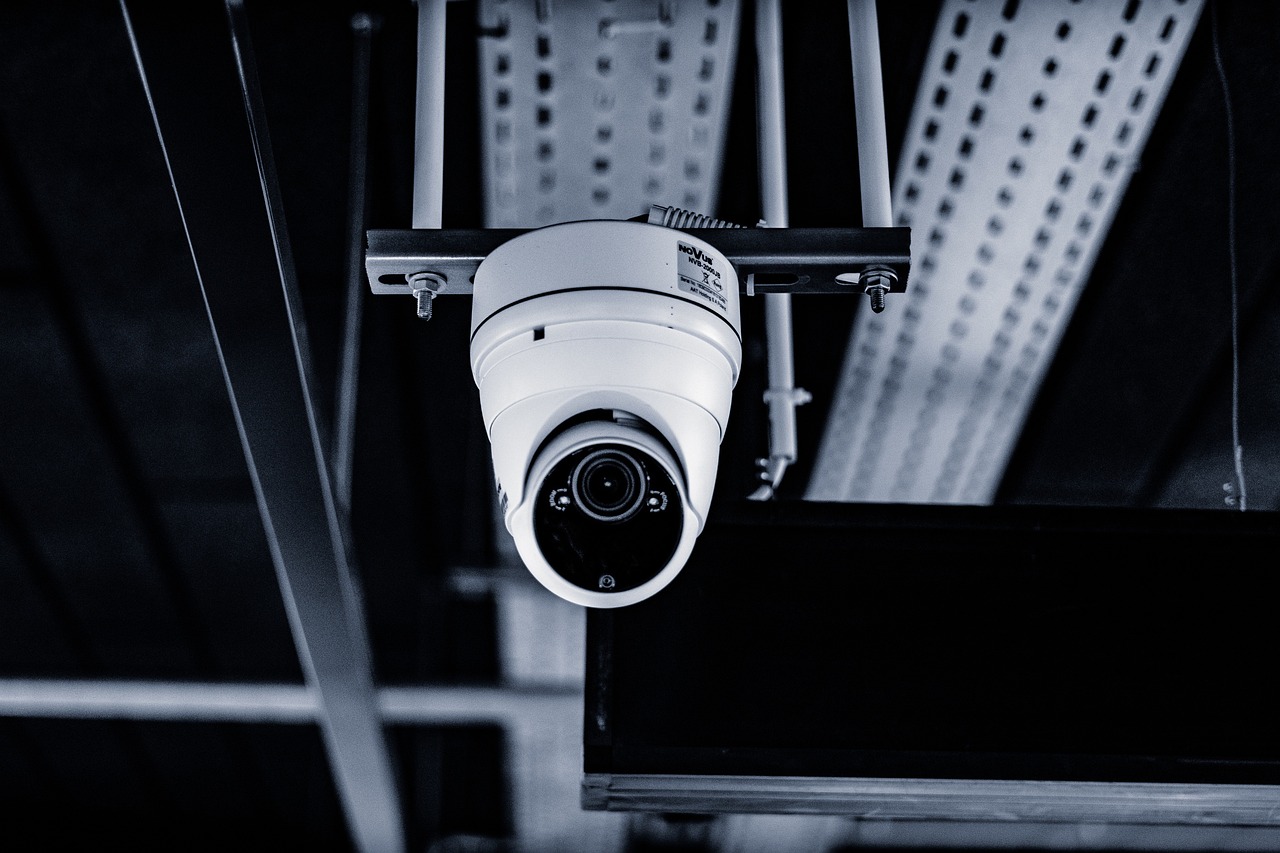
Utilizing Alarms and Surveillance
When it comes to securing your garden shed, alarms and surveillance systems can be game-changers. Imagine this scenario: you’re enjoying a peaceful evening in your backyard, and suddenly, a loud alarm pierces the night, alerting you to an intruder trying to access your shed. This is the kind of peace of mind that a good alarm system can provide. But how do you choose the right system for your needs? Let's dive into the world of shed security!
First off, let’s talk about alarm systems. These devices are designed to detect unauthorized access and alert you—often with a loud siren or notification to your smartphone. They come in various forms, from simple door alarms to sophisticated systems that integrate with your home security network. When selecting an alarm system, consider the following factors:
- Type of Alarm: Choose between motion sensors, door/window sensors, or even a combination of both.
- Connectivity: Look for systems that can connect to your smartphone or home network for real-time alerts.
- Power Source: Decide whether you prefer battery-operated systems or those that can be hardwired.
Next, let’s explore surveillance cameras. These devices provide a visual record of any activity around your shed, which can be incredibly helpful in deterring potential thieves. With the advancements in technology, modern surveillance cameras offer features like night vision, motion detection, and cloud storage. When choosing a surveillance camera for your shed, keep these points in mind:
- Resolution: Higher resolution cameras provide clearer images, making it easier to identify intruders.
- Field of View: A wider field of view means you can cover more area with fewer cameras.
- Weatherproofing: Ensure the camera is designed to withstand outdoor conditions.
For optimal effectiveness, consider installing a combination of alarms and cameras. This way, you not only receive immediate alerts about unauthorized access but also have visual evidence of any incidents. Think of it as building a fortress around your shed—layering your defenses for maximum protection!
Now, let’s touch on the importance of strategic placement. When installing your alarm system and surveillance cameras, think about the most vulnerable points of access. For instance, placing cameras at the corners of your shed can help capture a wider angle, while door alarms should be positioned at all entry points. Proper placement can significantly enhance your overall security strategy.
In conclusion, utilizing alarms and surveillance systems is a smart move for anyone looking to protect their garden shed. With the right combination of technology, you can deter intruders and keep your belongings safe. Remember, it’s not just about having the security systems in place; it’s about choosing the right ones that fit your needs and maintaining them regularly to ensure they function effectively.
Q: How effective are alarm systems for garden sheds?
A: Alarm systems can be very effective, especially when combined with surveillance cameras. They provide immediate alerts and can deter potential intruders.
Q: Do I need a professional to install these systems?
A: While some systems are designed for DIY installation, hiring a professional can ensure that everything is set up correctly and securely.
Q: Can I monitor my shed remotely?
A: Yes, many modern alarm systems and surveillance cameras allow for remote monitoring via smartphone apps, giving you peace of mind wherever you are.

Alarm Systems
When it comes to securing your garden shed, are like the vigilant sentinels of your outdoor sanctuary. They provide an immediate alert if someone tries to break in, giving you peace of mind while you focus on enjoying your garden. Imagine this: you’re sipping your morning coffee, and suddenly, a loud alarm goes off. You know right away that something is amiss, and you can take action quickly. But not all alarm systems are created equal, so let’s dive into how to choose the right one for your needs.
There are several types of alarm systems available, each with its unique features and benefits. For instance, some systems are designed to be simple and straightforward, while others come packed with advanced technology. Here’s a quick overview of the different types:
| Type of Alarm System | Features | Best For |
|---|---|---|
| Wired Systems | Connected directly to your power supply; reliable but can be complicated to install. | Permanent setups where wiring is feasible. |
| Wireless Systems | Easy to install and relocate; operates on batteries. | Temporary or frequently changing setups. |
| Smart Alarm Systems | Can be controlled via smartphone; integrates with other smart home devices. | Tech-savvy users looking for remote monitoring. |
Choosing an alarm system involves considering your specific needs. Do you want something that alerts you via your smartphone? Or perhaps a traditional loud alarm that sounds off when there’s a breach? Make a list of your priorities, and you’ll find it easier to narrow down your options.
Furthermore, consider the installation process. Some systems require professional installation, while others are DIY-friendly. If you’re handy with tools, a wireless system might be the way to go, as it can often be set up in a matter of minutes. On the other hand, if you prefer a more permanent solution, a wired system might be worth the extra effort.
Lastly, think about monitoring options. Some alarm systems offer 24/7 monitoring services for an additional fee. This means that if your alarm goes off, a monitoring center will take action, such as contacting you or the authorities. This level of security can be particularly beneficial if you’re frequently away from home.
In summary, investing in an alarm system for your garden shed is a smart move. It acts as a deterrent for potential thieves and provides you with an extra layer of security. Whether you choose a simple alarm or a high-tech smart system, the key is to find one that fits your lifestyle and security needs. After all, a secure shed means you can enjoy your gardening without the nagging worry of theft.
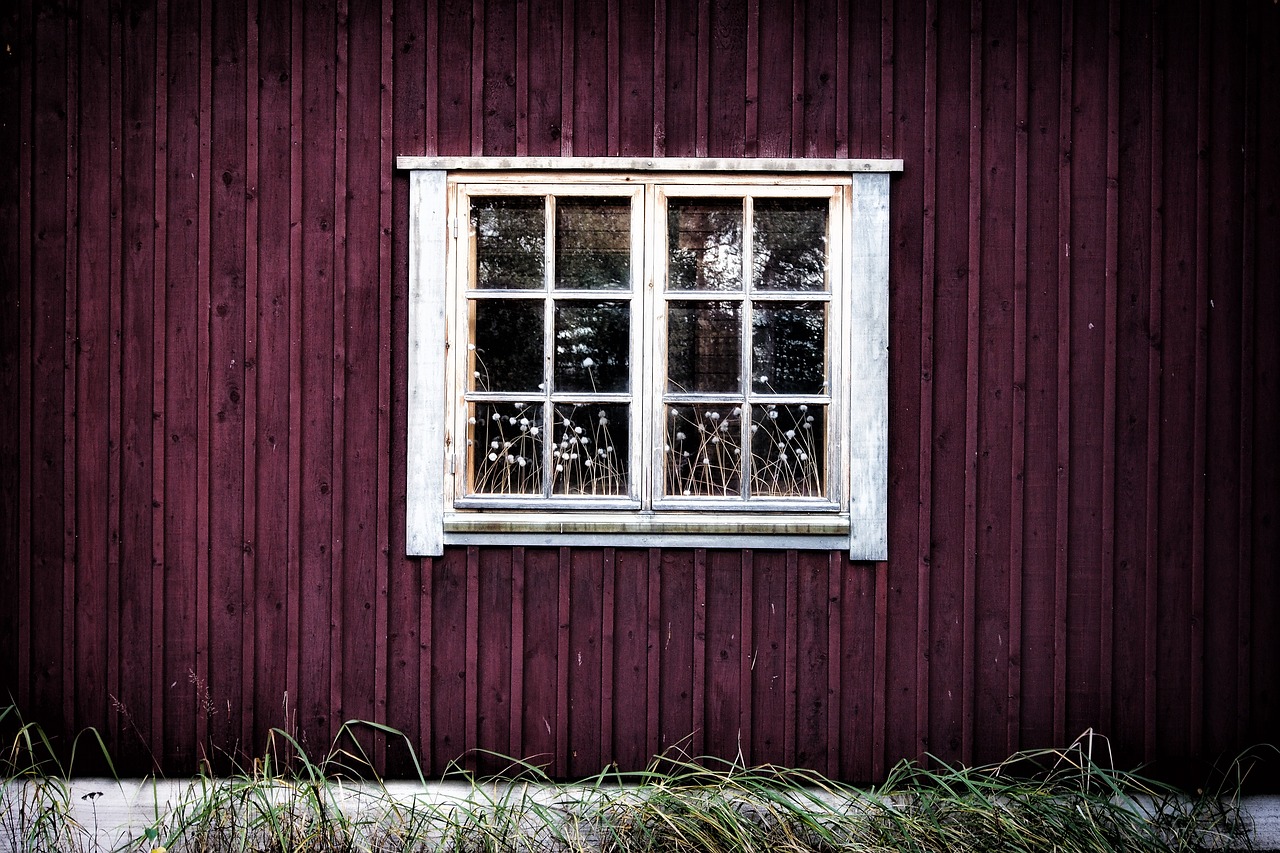
Surveillance Cameras
When it comes to securing your garden shed, incorporating can be a game changer. These devices not only act as a deterrent to potential thieves but also provide you with peace of mind knowing that your belongings are being monitored. Imagine having eyes on your shed at all times, even when you’re away! With the advancements in technology, choosing the right surveillance system has never been easier.
There are several types of surveillance cameras you can consider for your garden shed. Some of the most popular options include:
- Wired Cameras: These cameras provide a stable connection and are less prone to interference. However, installation can be more complex as it requires running cables.
- Wireless Cameras: Easy to install and can be placed almost anywhere, these cameras connect via Wi-Fi. Just keep in mind that they may be susceptible to signal loss.
- Battery-Powered Cameras: Perfect for remote locations, these cameras operate on batteries, making them highly portable. However, you’ll need to monitor battery life regularly.
When selecting a surveillance camera for your shed, consider the following features:
| Feature | Description |
|---|---|
| Resolution | Higher resolution cameras provide clearer images. Aim for at least 1080p for detailed footage. |
| Night Vision | Ensure your camera has night vision capabilities to capture footage in low-light conditions. |
| Motion Detection | Cameras with motion detection can alert you when movement is detected, saving storage space and keeping you informed. |
| Storage Options | Look for cameras with cloud storage options for easy access to footage, or those that support local storage via SD cards. |
Placement of your surveillance cameras is crucial for maximum effectiveness. Ideally, you should position them to cover all entry points, such as doors and windows. Additionally, consider placing a camera at a height that makes it difficult for intruders to tamper with. A well-placed camera not only captures any suspicious activity but also serves as a visible deterrent. After all, if a thief sees a camera, they might think twice before attempting to break in!
In conclusion, investing in surveillance cameras is a smart move for anyone looking to enhance the security of their garden shed. With various options available, you can choose a system that fits your specific needs and budget. Remember, the goal is to create a secure environment where you can store your tools and belongings without worry.
Q: How many cameras do I need for my garden shed?
A: The number of cameras depends on the size of your shed and the area you want to cover. Typically, one or two well-placed cameras can suffice for a small shed.
Q: Can I monitor my shed cameras remotely?
A: Yes, many modern surveillance cameras offer remote access via smartphone apps, allowing you to view live footage from anywhere.
Q: What should I do if I notice suspicious activity on my camera?
A: If you see suspicious activity, contact local authorities immediately and avoid confronting the individual yourself.
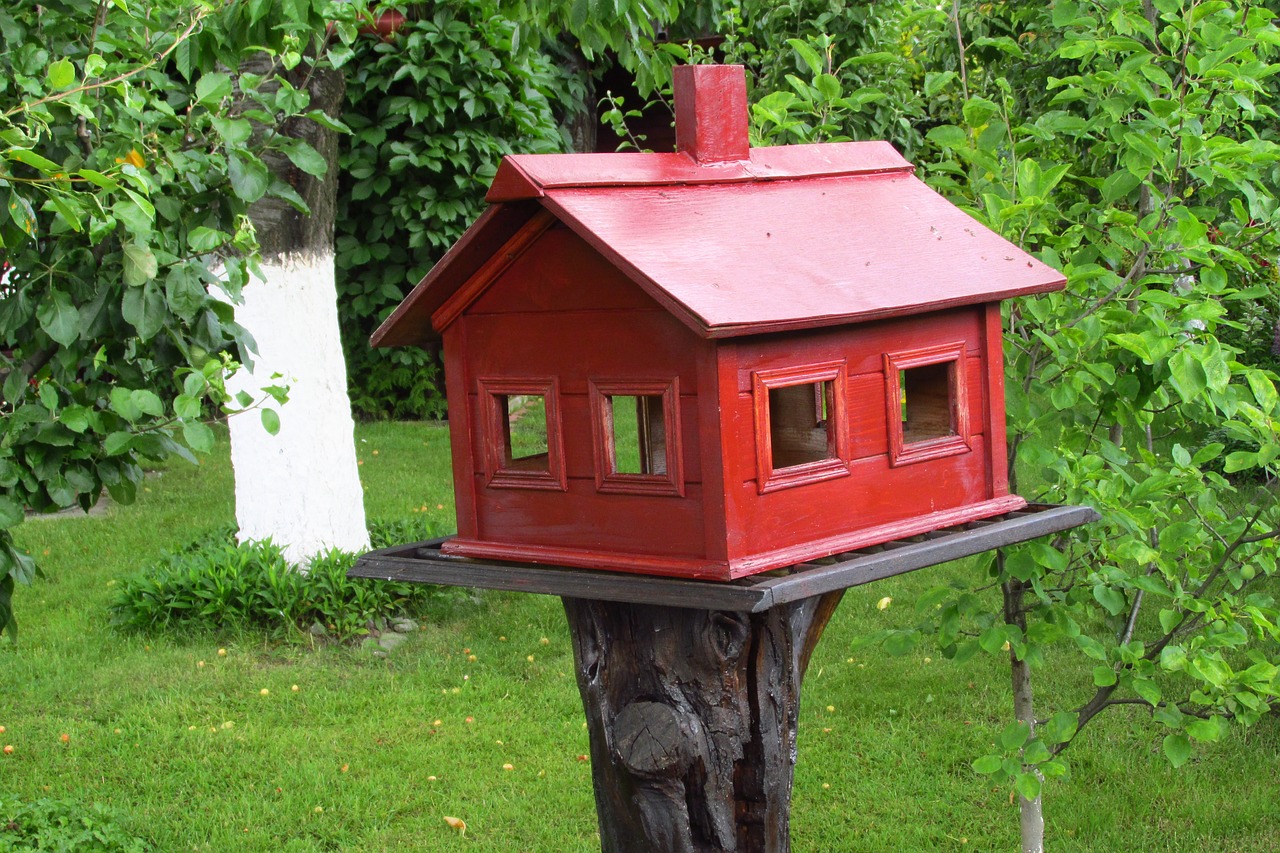
Regular Maintenance and Inspections
Routine maintenance and inspections are not just chores; they are essential practices that can significantly enhance the security of your garden shed. Think of your shed as a fortress for your tools, equipment, and other valuables. Just like a fortress needs regular checks to ensure it remains impenetrable, your shed requires the same level of attention. By keeping an eye on the condition of your shed, you can identify potential vulnerabilities before they become serious problems.
One of the most critical aspects of maintenance is to regularly check the functionality of your locks. Over time, locks can become rusty, jammed, or even fail completely. A lock that doesn’t work properly is like a welcome mat for thieves. To avoid this, consider the following tips:
- Inspect locks monthly: Look for signs of wear and tear, and ensure they operate smoothly.
- Lubricate regularly: Use a graphite lubricant to keep the mechanisms functioning well.
- Replace when necessary: If a lock shows significant damage or starts to malfunction, replace it promptly to maintain security.
In addition to locks, you should also inspect the overall condition of your shed. Check for any signs of damage, such as rotting wood, loose panels, or rusted hinges. These issues can compromise your shed's integrity and provide easy access for intruders. Make it a habit to conduct a thorough inspection at least twice a year, ideally in spring and fall, to catch any issues early.
Another important area to focus on is the doors and windows. Reinforcing these entry points can drastically improve your shed's security. For instance, consider adding security bars on windows or installing a second lock on the door. These enhancements not only deter potential thieves but also give you peace of mind knowing your belongings are safe. Remember, a well-maintained shed acts as a deterrent to would-be intruders.
After performing your inspections, it's wise to document any findings. Keeping a maintenance log can help you track what has been done and remind you of what needs attention in the future. You can create a simple table to record your inspections:
| Date | Inspection Item | Condition | Action Required |
|---|---|---|---|
| MM/DD/YYYY | Locks | Good | Lubricate |
| MM/DD/YYYY | Doors | Loose | Tighten screws |
| MM/DD/YYYY | Windows | Cracked | Replace glass |
By maintaining a diligent inspection routine, you not only extend the life of your shed but also enhance its security. Remember, an ounce of prevention is worth a pound of cure. So, grab your tools, roll up your sleeves, and make regular maintenance a part of your gardening routine. Your shed will thank you, and so will your peace of mind!
Q: How often should I inspect my garden shed?
A: It's recommended to inspect your shed at least twice a year, ideally in spring and fall, to catch any issues early.
Q: What should I do if I find a broken lock?
A: If you find a broken lock, replace it immediately to ensure your shed remains secure.
Q: Are smart locks worth the investment?
A: Yes, smart locks offer advanced features like remote access and monitoring, which can enhance your shed's security significantly.
Q: Can I reinforce my shed doors myself?
A: Absolutely! Simple reinforcements like adding a second lock or using security bars can be done with basic tools.

Lock Maintenance
Maintaining your locks is not just about keeping them shiny and functional; it’s about ensuring that your garden shed remains a fortress against potential intruders. Think of your locks as the guardians of your possessions—if they’re not in tip-top shape, you might as well leave the door wide open! Regular lock maintenance can prevent unexpected surprises and costly replacements down the line. So, what should you focus on to keep those locks working smoothly?
First off, it’s essential to regularly check the condition of your locks. Look for any signs of rust or corrosion, especially if your shed is exposed to the elements. A simple visual inspection can save you from future headaches. If you notice any rust, consider applying a rust remover and a protective spray to keep the lock in good condition. Additionally, ensure that the locking mechanism operates smoothly. If you find it stiff or jammed, it’s time to lubricate it!
When it comes to lubrication, using the right product is crucial. Avoid oil-based lubricants, as they can attract dirt and grime over time. Instead, opt for a silicone-based lubricant or graphite powder, which will keep the internal parts moving freely without leaving a sticky residue. A quick spray or a few drops of lubricant every few months can work wonders in prolonging the life of your locks.
Also, don’t forget about the keys! Keeping your keys in good condition is just as important as maintaining the locks themselves. If your keys are bent or worn, they can cause unnecessary strain on the lock, leading to malfunctions. Consider having a spare key made and store it in a safe place, just in case you lose your primary key. This way, you won’t be left in a lurch when you need access to your shed.
Lastly, if you have a smart lock, remember that they come with their own set of maintenance requirements. Regularly check the battery levels and replace them as needed. Some smart locks also require firmware updates to ensure they function optimally and remain secure against potential cyber threats. Keeping your smart lock updated is like giving it a tune-up, ensuring it runs smoothly and securely.
In summary, lock maintenance is a straightforward yet essential task that can significantly enhance the security of your garden shed. By routinely checking, lubricating, and caring for your locks and keys, you can rest easy knowing that your belongings are well protected. After all, a little bit of maintenance goes a long way in keeping your garden shed a safe haven for your tools, equipment, and cherished outdoor items.
- How often should I maintain my locks? It's advisable to check and maintain your locks every few months, ensuring they remain in good working order.
- What type of lubricant should I use for my locks? Use a silicone-based lubricant or graphite powder to avoid attracting dirt and grime.
- What should I do if my lock is stuck? If your lock is stuck, try applying a lubricant and gently wiggling the key. If it remains stuck, consider consulting a locksmith.
- Are smart locks more secure than traditional locks? Smart locks often provide additional features like remote access and monitoring, making them a secure option when properly maintained.

General Shed Maintenance
Maintaining your garden shed is not just about aesthetics; it plays a crucial role in ensuring its security and longevity. Just like you wouldn’t ignore a leaky roof on your house, neglecting your shed can lead to vulnerabilities that might invite unwelcome visitors. Regular maintenance checks can help you spot potential issues before they escalate into significant problems. So, what should you be looking for during these inspections?
First and foremost, inspect the exterior of your shed. Look for signs of wear and tear, such as peeling paint, rust, or any cracks in the structure. These can serve as entry points for pests or even thieves. A simple touch-up of paint or a rust-inhibiting spray can go a long way in preserving the integrity of your shed. Additionally, ensure that the foundation is solid and that there are no areas where water can pool, as standing water can weaken the structure over time.
Next, pay attention to the locks and hinges. These are the first lines of defense against intruders. Make sure that all locks are functioning correctly; if you notice any stiffness or difficulty in locking/unlocking, it might be time to lubricate them. A good quality lubricant can prevent rust and ensure smooth operation. Furthermore, check the hinges for any signs of rust or damage, as compromised hinges can render your shed vulnerable to forced entry.
Another essential aspect of shed maintenance is organizing the interior. Not only does a well-organized shed look better, but it also makes it easier to spot any items that may have been tampered with or moved. Keep tools and equipment stored securely, preferably in locked cabinets or bins. This not only protects your belongings but also reduces clutter, making it easier to conduct regular inspections.
Lastly, consider implementing a seasonal maintenance schedule. This could include tasks such as:
- Checking for leaks in the roof and repairing them promptly
- Cleaning gutters and ensuring proper drainage
- Inspecting windows and replacing any broken glass or faulty locks
- Repainting or treating the wood to prevent rot and decay
By staying proactive with your shed's maintenance, you not only extend its life but also bolster its security. Remember, a little effort goes a long way in protecting your investments and ensuring that your garden shed remains a safe haven for your tools and treasures.
Q: How often should I inspect my garden shed?
A: It's recommended to inspect your shed at least twice a year, ideally in spring and fall. This ensures that any wear and tear are caught early.
Q: What should I do if I find a broken lock?
A: Replace the broken lock immediately. It's crucial to maintain the security of your shed, and a broken lock can be an easy target for thieves.
Q: Are there specific maintenance tasks I should do seasonally?
A: Yes, seasonal tasks include checking for leaks, cleaning gutters, and inspecting windows and doors for any damage.
Q: Can I enhance my shed's security without spending a lot?
A: Absolutely! Simple measures like reinforcing doors, using quality locks, and maintaining your shed can significantly enhance security without breaking the bank.
Frequently Asked Questions
- What are the common vulnerabilities in garden sheds?
Common vulnerabilities include weak locks, flimsy doors, unsecured windows, and lack of alarm systems. It's essential to assess these areas regularly to ensure your shed remains secure.
- How do I choose the right lock for my shed?
When selecting a lock, consider the type of lock that suits your needs best, such as padlocks, deadbolts, or smart locks. Look for features like durability, resistance to picking, and ease of use.
- What types of locks are best for garden sheds?
Padlocks are versatile and easy to use, while deadbolts provide robust security. Smart locks offer advanced features like remote access. Choose based on your security needs and convenience.
- How can I reinforce my shed's doors?
You can reinforce doors by adding metal plates, using longer screws for hinges, or installing a deadbolt. These measures make it harder for intruders to gain access.
- What are some effective window security options?
Consider installing window locks, security bars, or even security film. These options can help prevent unauthorized access through windows, which are often overlooked.
- Do I need an alarm system for my garden shed?
While it’s not mandatory, an alarm system can significantly enhance your shed's security by alerting you to any unauthorized access. It acts as a strong deterrent against theft.
- How often should I inspect my shed for security issues?
Regular inspections should be conducted at least once every few months. Check locks, hinges, and the overall condition of the shed to catch any vulnerabilities early.
- What maintenance is required for locks?
Locks should be lubricated periodically and checked for any signs of wear. Regular maintenance ensures they function properly and remain effective against intruders.
- Can I install surveillance cameras myself?
Yes, many surveillance camera systems are designed for easy DIY installation. Just follow the instructions provided, and ensure cameras are placed strategically for maximum coverage.

